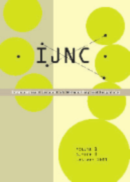13 巻, 1 号
選択された号の論文の5件中1~5を表示しています
- |<
- <
- 1
- >
- >|
-
Preface: Special Issue on Workshop on Advances in Parallel and Distributed Computational Models 20222023 年 13 巻 1 号 p. 1
発行日: 2023年
公開日: 2023/01/11
PDF形式でダウンロード (35K) -
2023 年 13 巻 1 号 p. 2-17
発行日: 2023年
公開日: 2023/01/11
PDF形式でダウンロード (1274K) -
2023 年 13 巻 1 号 p. 18-47
発行日: 2023年
公開日: 2023/01/11
PDF形式でダウンロード (3135K) -
2023 年 13 巻 1 号 p. 48-61
発行日: 2023年
公開日: 2023/01/11
PDF形式でダウンロード (504K) -
2023 年 13 巻 1 号 p. 62-91
発行日: 2023年
公開日: 2023/01/11
PDF形式でダウンロード (1667K)
- |<
- <
- 1
- >
- >|
